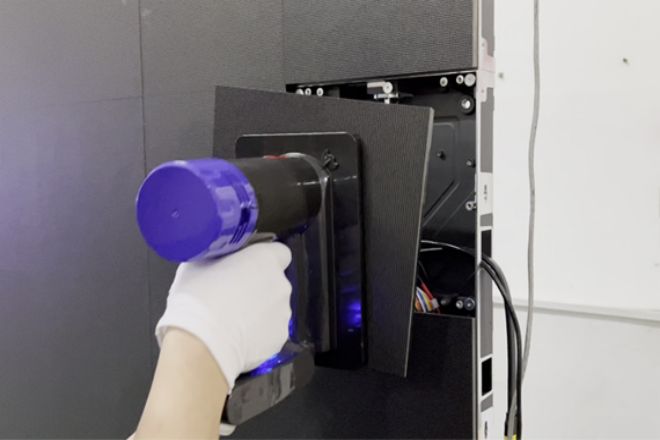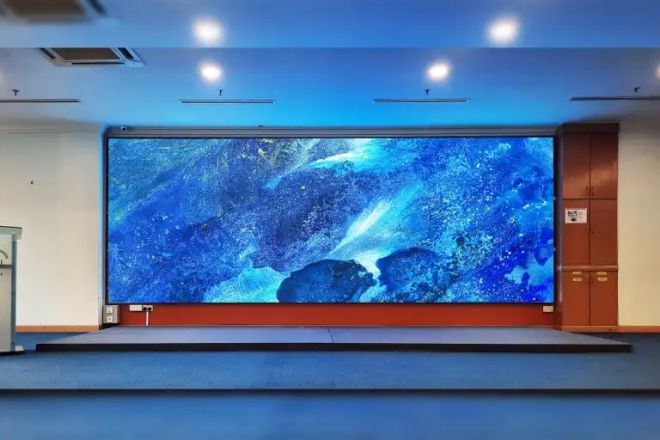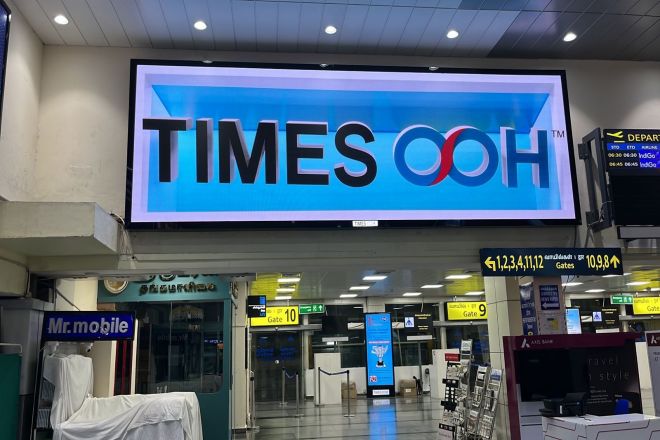序章

科学技術の急速な発展により、 LED表示画面 have become an indispensable part of our daily lives. Whether it is a bustling commercial district, a solemn conference exhibition, or a passionate sports event, LED display screens have attracted countless eyes with their excellent expressiveness and rich functions. However, like any electronic device, LED display screens also require careful maintenance and care.
This article will introduce you to some small knowledge about the maintenance of LED display screens, to help you better understand and master the maintenance skills of LED display screens, to ensure that they can operate stably in various occasions and show the best results.
1. Daily maintenance of LED display screens
As an important device for modern information display, the daily maintenance of LED display screens is essential to ensure their stable operation and extend their service life. The following are several aspects of daily maintenance of LED display screens:
- 定期検査
Perform a regular appearance inspection of the LED display screen to ensure that there are no scratches, stains, watermarks, etc., on the screen surface. These stains not only affect the display effect but may also cause long-term damage to the screen.
Check all parts of the display screen, including the frame, bracket, connector, etc., to ensure that there is no loosening, falling off, or damage. These problems may affect the stability and safety of the display screen.
- 清掃とメンテナンス
Use a soft, dry cloth or special cleaner to gently wipe the screen surface to remove dust and stains. Avoid using chemical solvents or rough cloth to avoid scratching the screen surface.
During the cleaning process, be careful not to use excessive force or use improper tools to avoid damaging the display.
- Ventilation and heat dissipation
Keep the air around the LED display screen and avoid direct sunlight or high-temperature environments. This ensures good heat dissipation performance of the display screen and avoids damage caused by overheating.
Regularly clean the dust and debris on the back of the display screen to ensure that the heat dissipation holes are not blocked.
- Waterproof and moisture-proof
Pay attention to waterproof and moisture-proof to avoid water or moisture inside the display screen. In humid or rainy environments, pay special attention to waterproof measures to prevent short circuits or damage.
If the display screen is unfortunately wetted by water, turn off the power immediately and contact professionals for repair.
Through the above four aspects of daily maintenance, we can effectively protect the LED display screen, ensure its stable operation, and extend its service life. At the same time, we must also develop good usage habits to avoid unnecessary damage to the display screen.
2. Troubleshooting of LED display screen

When an LED display screen fails, it is crucial to quickly and accurately locate and solve the problem. The following are some common LED display screen failures and their troubleshooting methods:
1). The display screen is not lit
- Possible reasons:
the power plug is not plugged in properly, the power switch is not turned on, the power cord is damaged, and the driver board or control board is faulty.
1.1)。解決策:
Check whether the power plug is firmly inserted into the socket.
Confirm that the power switch is turned on.
Check whether the power cord is intact and if it should be replaced if damaged.
If all of the above are normal, the driver board or control board may be damaged, and professionals should be asked to check and replace related parts.
2). The display screen is distorted.
Possible reasons are poor signal line connection and signal source problems.
2.1) 解決策:
Check whether the signal line is firmly connected, and reconnect it if it is loose.
Try to replace the signal source to eliminate the signal source problem.
If the problem persists, it may be a fault in the internal signal processing component of the display screen, and professionals should be asked to repair it.
3). The display color is abnormal.
- Possible reasons:
the driver board or control board is faulty.
3.1) 解決策:
Check whether the connection between the driver board and the control board is normal and whether there is obvious damage.
If the connection is normal but the color is still abnormal, it may be a circuit failure inside the driver board or control board, and related parts need to be replaced.
4). The display screen has a black screen, flashing screen, etc.
Possible reasons: power supply problem, damage to internal components of the display screen.
4.1) 解決策:
Check whether the power supply is working properly. If there is a problem, it should be replaced or repaired.
If the power supply is normal, it may be that the internal components of the display screen (such as lamp beads, driver IC, etc.) are damaged, and professionals need to be asked to inspect or replace them.
When troubleshooting LED display screen failures, be sure to disconnect the power supply first to ensure safety. If you are not familiar with electronic equipment, it is recommended to seek help from professionals. In addition, regular maintenance and care of the display screen can also reduce the occurrence of failures.
3. Upgrade and transformation of LED display screens
With the continuous advancement of technology, the upgrade and transformation of LED display screens have become the key to meeting modern display needs. The following are several key aspects of the upgrade and transformation of LED display screens:
1). Parts upgrade
- 重要性:
With the development of technology, the control system of LED display screens is also constantly updated and improved. Software upgrade is an important means to improve the stability and performance of the display screen.
1.1). Implementation method:
Check the software version regularly to find out if there are new updates available.
Select a software version compatible with the current hardware device to ensure stability and applicability after the upgrade.
Back up the original system and data before upgrading to prevent data loss caused by accidents during the upgrade process.
Follow the correct update steps to upgrade the software to ensure that the software can run normally.
2). Hardware upgrade
- 目的:
When the display effect or function of the display screen cannot meet the needs, hardware upgrade becomes a necessary choice.
2.1). Upgrade content:
Display module: Replace the LED display module with higher resolution and higher brightness to improve the display effect.
Control system: Update the control card and player to support more functions and higher performance.
Power supply system: Replace the power supply with higher power and more stable power supply to ensure the stable operation of the display screen.
2.2). Notes:
Choose hardware devices compatible with the original equipment to ensure stability and performance after the upgrade.
Follow the correct installation steps and wiring methods to ensure the correctness and safety of the hardware upgrade.
3). Intelligent transformation
- 意義:
Combining advanced technologies such as the Internet of Things and big data, the intelligent transformation of LED display screens can greatly improve the intelligence level of the display screen.
3.1). Transformation content:
Remote monitoring: Realize remote monitoring and management of the display screen to improve management efficiency.
Intelligent control: Through the intelligent control system, the content of the display screen can be adjusted and controlled in real-time.
Data analysis: Collect and analyze the usage data of the display screen to provide data support for optimizing content playback and marketing strategies.
3.2). Implementation method:
Introduce advanced Internet of Things and big data technologies to build an intelligent display management system.
Renovate the existing display to make it have intelligent functions.
4. Maintenance and storage of LED display

1). Maintenance
- Avoid collision and vibration:
When using LED displays, special attention should be paid to avoid collision and vibration. Any severe impact or vibration may damage the internal components of the display, thereby affecting its normal operation and life.
Especially during transportation, installation, and maintenance, it should be handled with care to avoid unnecessary impact on the display.
- Avoid frequent power on and off:
Frequent power on and off operations may have a negative impact on the life of the LED display. Therefore, when using it, unnecessary power on and off operations should be avoided as much as possible.
If you need to temporarily turn off the display, you can choose standby or sleep mode to reduce damage to the display.
- Pay attention to cleaning and ventilation:
Clean the surface of the LED display regularly to remove dust and stains and maintain its clarity and display effect.
Use a soft dry cloth or special cleaner for cleaning, and avoid using chemical solvents or rough cloth.
Keep the air circulation around the display and avoid direct sunlight or high-temperature environments to ensure its good heat dissipation performance.
2). Storage
- Choose a suitable storage environment:
When the LED display is not used for a long time, it should be stored in a dry, ventilated, and dust-free environment. Avoid direct sunlight and high-temperature environments to prevent the display from getting damp, deformed, or damaged.
- Check the storage environment regularly:
Check the storage environment regularly to see if it meets the requirements, including factors such as temperature, humidity, and dust. If problems are found, measures should be taken to improve them in time.
- Proper placement and protection:
During storage, the LED display should be placed vertically to avoid deformation or damage caused by long-term flat placement.
Use pearl cotton or other soft materials to wrap and fix the display to prevent collision or extrusion during transportation or movement.
- Moisture-proof and dust-proof:
Place a desiccant or moisture-proof agent in the storage environment to absorb moisture in the air and prevent the display from getting damp.
Cover the display with a dust cover or lid to prevent dust and debris from entering the interior of the display.
結論
As an important tool for modern information display, the stability and display effect of the LED display directly affects our visual experience and information reception. Therefore, it is particularly important to understand and master the maintenance knowledge of the LED display. Through the introduction of this article, I believe you have a deeper understanding of the maintenance of the LED display.
最後に、LEDディスプレイについてもっと知りたい方は、 ご連絡ください。

1件の返信
Quelle peut être là maintenance systématique que nous pouvions apporter à notre écran géant à led?